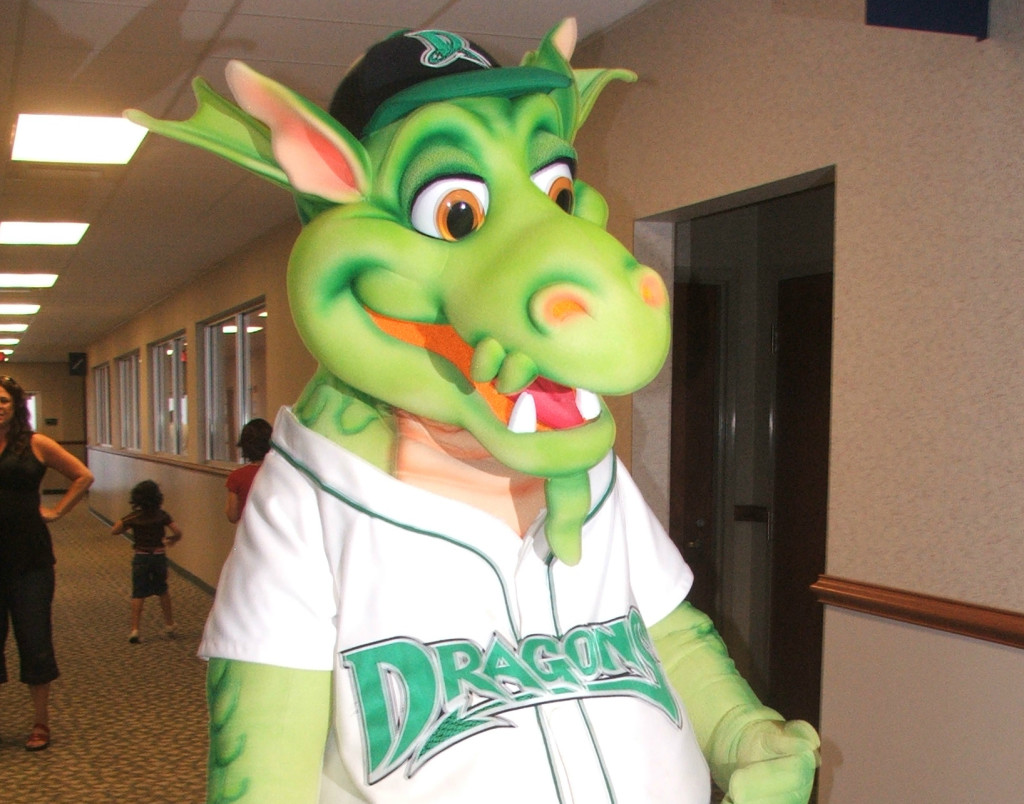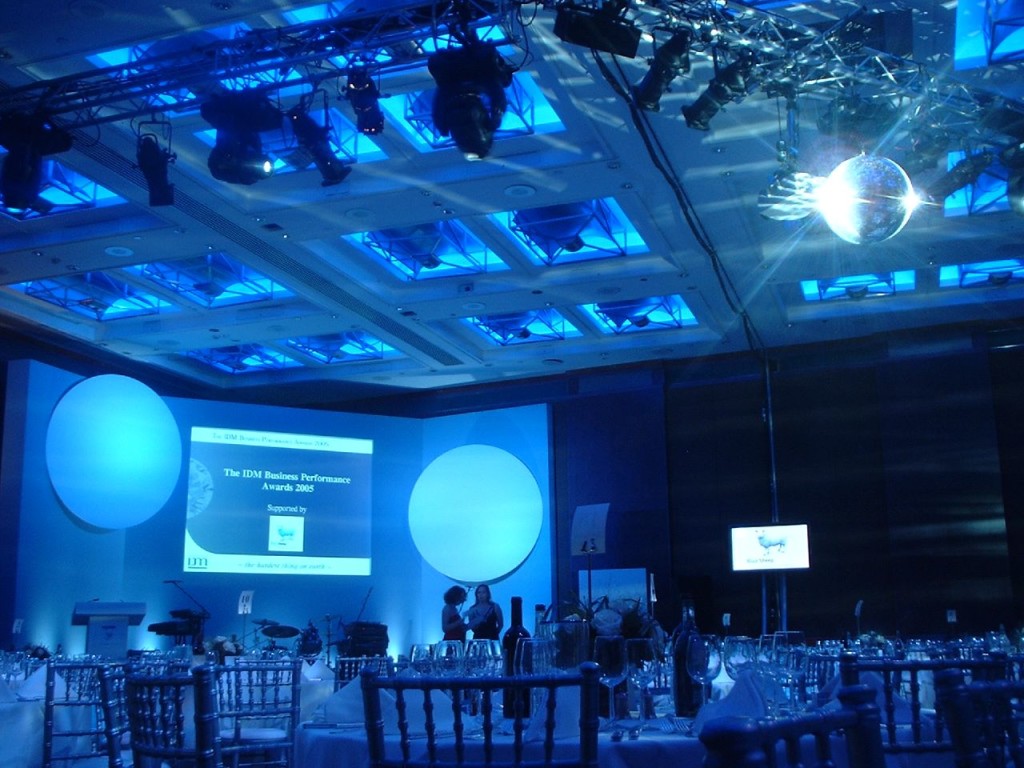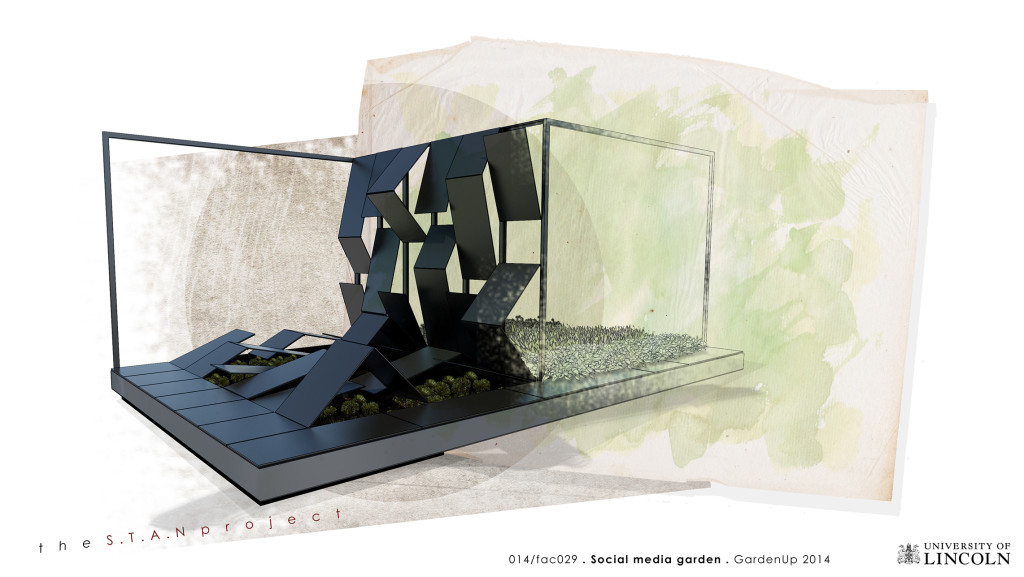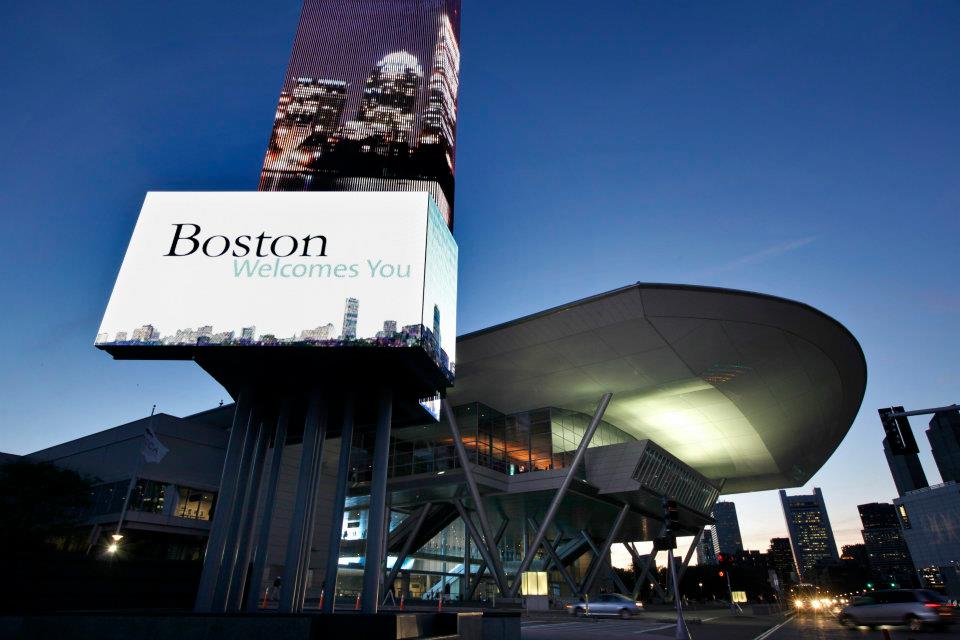Industry News Weekly Roundup
There was a lot of news this past week. Here are some stories that caught our eyes.
This Mascot’s Sweet Surprise for a Deaf Fan at the Ballpark was a Grand Slam of Awesomeness
—The Huffington Post
Hunter Samworth, 7, is deaf and a huge fan of Heater, the mascot for the Dayton Dragons, a minor league baseball team in Ohio…”
SEC OKs Use of More Cowbell, In-stadium Music for Football
—AL.com
“Mississippi State is at the center of the legislation, which the SEC believes will help ‘enhance the fan experience and provide institutions with the flexibility to appeal to their fans by the use of music and institutionally controlled noise.'”
Have We Reached The End Of The Line For The Conference Call?
—NPR
“Humans have put a man on the moon, harnessed the atom and built supercomputers that can perform quadrillions of calculations per second. But try to get five people with telephones talking to each other and our high-tech society can break down.”
6 Reasons to Talk to Strangers About Your Work
—Forbes
“What can having conversations with people in our ‘outer circle’ do for your business?
How Google Glass Could Change the Way We View Art
—The Independent
“A team from Manchester Metropolitan University (MMU) is investigating how Google’s new wearable computers can be used to display instant information on artworks as visitors walk round museums, possibly replacing gallery guidebooks and audio guides entirely.”
Exposure to Blue Light Increases Hunger
The color blue is known to have a calming effect and can spark creativity. Now, let’s add hunger to that list.
According to a new study, blue-enriched light exposure was associated with an increase in hunger 15 minutes after light onset and still lingered two hours after the meal. Blue light also decreased sleepiness and contributed to higher measures of insulin resistance.
“It was very interesting to observe that a single three-hour exposure to blue-enriched light in the evening acutely impacted hunger and glucose metabolism,” said study co-author Ivy Cheung, a doctoral candidate in the Interdepartmental Neuroscience program at Northwestern University in Chicago, Illinois. “These results are important because they suggest that manipulating environmental light exposure for humans may represent a novel approach of influencing food intake patterns and metabolism.”
So, the next time you have an event and there is some leftover food you’d like to have eaten, just wash the room with some blue light.
(photo credit: On Stage Lighting via photopin cc)
How Would You Like to Have an Emotional Venue?
Imagine if your venue could adapt to your guests’ emotional states. That may seem like fantasy, but one group is working on it.
The STAN (Science Technology Architecture Networks) research project is exploring whether buildings can reflect human emotions. The group created a Twitter-reactive garden of articulating steel structure that is controlled by people’s responses via Twitter when they use the hashtag #gardenup.
“The garden essentially points to a future in which buildings could modify themselves in response to monitoring our emotional state via social media,” said Richard M. Wright, senior lecturer at the Lincoln School of Architecture in England. “For example, if we feel like wearing a big cosy jumper and sipping a cup of boiling hot soup, it will turn the temperature down and open a window. Buildings may also begin to reflect the mood of a populace by changing color or shape, constantly remapping our perception of our urban environment, with facades becoming animated, reflective, and mobile in response to communal desires and emotions.”
The STAN project will be making its first public appearance at the Garden Up horticultural event in Sheffield, England, June 7-8. You can also follow @thestanproject on Twitter to learn more about the project.
(Image: The STAN project)
OK, Google Glass
Two of our member venues have received Google Glass to experiment with in order to learn about the pros and cons of the technology when using it in a facility. We’ll be following their progress on the blog here and in FM magazine. This first blog post is written by Ruth Fajardo and Alex Hargis from the AT&T Performing Arts Center in Dallas, Texas.
OK, Google Glass…
Those are the command words you speak to enter the user interface for Google Glass, the latest embodiment in the next technological movement of wearable smart devices. The product is a pair of glasses that houses all the foundational inner workings of a smartphone. Google Glass allows the user, through voice command prompting or a miniature track pad, to make phone calls, record videos, take pictures, share content to Facebook/Twitter, surf the Web, process email, and find the nearest barbecue joint using GPS. All of these functions are visualized through a tiny prism embedded in a Robo Cop-esque eyepiece, allowing you to replicate essentially all your smartphone dependent tasks hands-free. The cutting edge technology harkens to Orwellian-like scenes from Minority Report or Brave New World, where with a few simple directives to a “Dave” or with a couple swishes of your hand you can begin flying a megaton, class A, intergalactic starship destroyer. Or at least that’s what the expectations around this piece of technology feels like. And if you can leverage this technology to zip around the cosmos, surely you can get it to sync with your menu boards at the bars to promote drink specials and raise your per caps, right?
Wrong. Well, who knows? Maybe it could. Maybe we think we’re in possession of a deluxe Swiss army knife and all we really have at this point is a really sharp stick. This is where we at the AT&T Performing Arts Center (PAC) in Dallas, Texas, is going to begin our journey. Even though the product is sleek, sexy, and comes with a litany of features that tittle the techie in all of us, we want to put it through the ringer and find out if we have the multipurpose tool of our dreams…or a stick. A really, really good looking and functional stick. Let’s not dog on a good ol’ fashioned stick.
Over the next few weeks, we’ll be conducting a series of case studies to judge how this “face computer” can work for our campus in fun, creative, and useful ways. Our marketing department will have Glass first to try out the recording function for an artist POV. Glass will then run the gamut of front of house, security, production, and back to operations for data compiling. And while we embark on this journey, we’re going to document everything and ask a heck of a lot of questions. One of our biggest concerns is how our patrons will perceive, say, our patron services staff supervisors wearing Glass, and how will venues perceive Google Glass when they start appearing on the faces of our patrons? Would you allow the newest, smallest, publicly-available wearable technology in your venue? What’s the ROI on this technology if you have to provide it for all of your security supervisors? What privacy laws are potentially being infringed upon? Can you consider the purchase of this equipment as a capital expenditure line item?
The staff at the AT&T PAC is incredibly excited to dive into the unknown world of wearable technology. We hope the data collected from this pilot program can be shared to help lay a foundation for the usage of wearable technology and to identify the warning flags from its presence and help our colleagues mitigate associated risk. We just got our pair this past week and have already put in the hands of our IT director with the detailed instructions to “figure this thing out” and let us know some ground rules before issuing to departments. As we make headway into our case studies, we look forward to sharing our results and feedback. Hopefully there will be much revelation to balance out the overwhelming frustration of trying to make one piece of technology solve every problem that has ever plagued the venue management industry. So, here’s to the future. All we have to do is put it on, cross our fingers, and say, “OK, Google Glass…”
VIDEO: Pianist Andre’ Watts wore AT&T PAC’s Google Glass during a rehearsal for his recital in the Winspear Opera House.
(photo credit: Thomas Hawk via photopin cc)
Industry News Weekly Roundup
There was a lot of news this past week. Here are some stories that caught our eyes.
Mass. House Approves $1.1B Convention Center Expansion
—The Boston Globe
“The new hotel and expansion of exhibit space would put Boston among the top convention destinations in the United States, according to James Rooney, executive director of the Convention Center Authority. He said the expansion, expected to be completed in 2019, would create thousands of jobs.”
Salvaged Metrodome Seats Find New Home in Woodbury
—Woodbury Bulletin
“After months spent establishing how to retrofit the stadium with the seats, the actual installation came together in a jiffy. McDermott worked with Stillwater-based Custom Craft Builders, and enlisted the help of parents and ballplayers.”
A Whispered Broadway Milestone No One’s Cheering
—Howard Sherman
“So while articles may be trumpeting record revenues and record attendance, they’re either downplaying, avoiding or ignoring the true breaking of the $100 threshold, preferring to lead with the allure of numbers in the millions (attendance) or billions (dollars). That’s a shame, because in terms of what matters to the average audience member, the average ticket price seems much more essential news. To me, that’s the headline.”
Barbican to Open New Creative Centre in East London
—The Stage
“Based in a Victorian warehouse beside the river Lea, the Fish Island Labs will be split into three spaces: private studios, a co-working space and a performance space…”
Andrews, Wilk Create Pitching App
—ESPN
“Based on the player’s age, Throw Like a Pro creates specific guidelines with regards to numbers of pitches. The rest calculator outlines appropriate rest prior to resuming pitching.”
(Image from the MCCA Facebook page)
Do you want to receive a Front Row News weekly digest?
Categories
- Allied (861)
- Architecture (147)
- Arenas (747)
- Career (897)
- Convention Centers (895)
- Education (623)
- Events (1,544)
- Food & Beverage (193)
- Foundation (113)
- Guest Experience (1,496)
- Industry News (2,270)
- Leadership (1,888)
- Marketing (150)
- Membership (2,000)
- Music (213)
- Performing Arts Centers (454)
- Professional Development (409)
- Research (127)
- Safety & Security (442)
- Sports (763)
- Stadiums (608)
- Student (159)
- Technology (516)
- Ticketing (92)
- Touring (82)
- Trends (364)
- Uncategorized (736)
- Universities (218)
- Video (25)
- Young Professional (198)
Twitter Feed
- Twitter feed loading
Recent Posts
- Raleigh Convention Center Update Following December 1st Fire
- VenuWorks Appoints Robert Thomas as Executive Director for Cedar Rapids Facilities
- Oak View Group Names Chris Granger Chief Executive Officer, Oak View Group
- Raleigh Convention and Performing Arts Complex Hosts Soup Packing Event to Feed Raleigh Residents
- Claire Rothman Blazed the Trail for Women in Venue Management
Categories
- Allied
- Architecture
- Arenas
- Career
- Convention Centers
- Education
- Events
- Food & Beverage
- Foundation
- Guest Experience
- Industry News
- Leadership
- Marketing
- Membership
- Music
- Performing Arts Centers
- Professional Development
- Research
- Safety & Security
- Sports
- Stadiums
- Student
- Technology
- Ticketing
- Touring
- Trends
- Uncategorized
- Universities
- Video
- Young Professional
Archives
- December 2025
- November 2025
- October 2025
- September 2025
- August 2025
- July 2025
- June 2025
- May 2025
- April 2025
- March 2025
- February 2025
- January 2025
- December 2024
- November 2024
- October 2024
- September 2024
- August 2024
- July 2024
- June 2024
- May 2024
- April 2024
- March 2024
- February 2024
- January 2024
- December 2023
- November 2023
- October 2023
- September 2023
- August 2023
- July 2023
- June 2023
- May 2023
- April 2023
- March 2023
- February 2023
- January 2023
- December 2022
- November 2022
- October 2022
- September 2022
- August 2022
- July 2022
- June 2022
- May 2022
- April 2022
- March 2022
- February 2022
- January 2022
- December 2021
- November 2021
- October 2021
- September 2021
- August 2021
- July 2021
- June 2021
- May 2021
- April 2021
- March 2021
- February 2021
- January 2021
- December 2020
- November 2020
- October 2020
- September 2020
- August 2020
- July 2020
- June 2020
- May 2020
- April 2020
- March 2020
- February 2020
- January 2020
- December 2019
- November 2019
- October 2019
- September 2019
- August 2019
- July 2019
- June 2019
- May 2019
- April 2019
- March 2019
- February 2019
- January 2019
- December 2018
- November 2018
- October 2018
- September 2018
- August 2018
- July 2018
- June 2018
- May 2018
- April 2018
- March 2018
- February 2018
- January 2018
- December 2017
- November 2017
- October 2017
- September 2017
- August 2017
- July 2017
- June 2017
- May 2017
- April 2017
- March 2017
- February 2017
- January 2017
- December 2016
- November 2016
- October 2016
- September 2016
- August 2016
- July 2016
- June 2016
- May 2016
- April 2016
- March 2016
- February 2016
- January 2016
- December 2015
- November 2015
- October 2015
- September 2015
- August 2015
- July 2015
- June 2015
- May 2015
- April 2015
- March 2015
- February 2015
- January 2015
- December 2014
- November 2014
- October 2014
- September 2014
- August 2014
- July 2014
- June 2014
- May 2014
- April 2014
- March 2014
- February 2014
- January 2014
- December 2013
- November 2013
- October 2013
- September 2013
- August 2013
- July 2013
- June 2013
- May 2013
- April 2013
- March 2013
- February 2013
- January 2013
- May 2012
- March 2012
- December 2011
- November 2011
- October 2011
Recent Comments
- Frank Bradshaw, Ph.D., CVE on John Meyer, CVE, a Tireless Advocate of Certification for Venue Professionals, Has Died
- Neil Sulkes on Hilary Hartung, Friend to Many in Venue Marketing, Has Left Us
- Jason Parker, CVE on The Devastation of Hurricane Helene and How We Can Support One Another
- Larry Perkins on Touhey Testifies Against Speculative Ticketing Before Congressional Subcommittee
- Peter Secord on Major Players for Planned Elkhart Amphitheater Were in the Mix at VenueConnect





